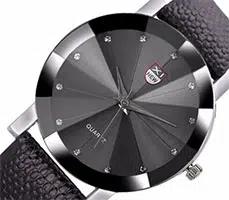 The German term quarz came into our language as quartz . It is a very hard and colorless mineral in its natural state, which is formed with silica (a compound made up of oxygen and silicon).
The German term quarz came into our language as quartz . It is a very hard and colorless mineral in its natural state, which is formed with silica (a compound made up of oxygen and silicon).
Quartz, widely present in the crust of planet Earth , is the anhydrous of silica. In general terms, we speak of anhydrous or anhydrous to refer to a substance that does not have water, and to obtain it, different methods must be applied, depending on the case.
The most frequently used way to obtain the anhydrous form of a solvent consists of bringing it to the boil with a hygroscopic substance, that is, one that is capable of absorbing moisture from the surrounding medium. On the other hand, it is also possible to use alkalis or molecular sieves, such as barium oxide or potassium hydroxide.
Quartz can be found in various kinds of rocks, mixed with titanium, potassium, sodium, lithium and other substances. On the Mohs scale , developed by German Friedrich Mohs in the 19th century , quartz has a hardness of grade 7 , which means it can scratch glass and common steel.
Depending on the substance with which it is mixed, quartz has different colors and properties . Among the best-known varieties of quartz are the following:
* citrine : it is a stone with a great magnetic capacity, which is believed to be beneficial for promoting creativity, dynamism and enthusiasm, in addition to attracting abundance;
* agate: vibration a altas frecuencias y e dice que nos brinda seguridad y firmeza por medio de la absorción de las energías negativas;
* amethyst : this variety of quartz is considered "protective", since it acts as a warning to keep consciousness awake and enhance intuition. It also helps to get rid of negative emotions and calm anger;
* crystal quartz : it is one of the most beneficial minerals on this list, since it amplifies and enhances energy and directs it where we want. Many people use it to fight negative energies that prevent them from moving forward in life. Despite its popularity in certain areas, it is also very unknown in others.
 The uses of quartz are multiple. It can be used to make sandpaper, optical instruments and gems. It is also used in the development of electronic watches known as quartz watches .
The uses of quartz are multiple. It can be used to make sandpaper, optical instruments and gems. It is also used in the development of electronic watches known as quartz watches .
These watches have a piece of this material that, activated through an electric battery , produces the impulses needed to measure time at regular intervals. Usually quartz is carved as a sheet and placed inside a metal cylinder that protects it. The electricity provided by the battery causes the quartz to vibrate regularly, allowing temporary measurement to be carried out.
The history of the quartz watch dates back to the beginning of the 20th century, when JW Horton and Warren Morrison manufactured the first example in the laboratories of the Bell Telephone company in North America. The Japanese watch manufacturing company Seiko used its own quartz watch called Quartz Crystal QC-591 in 1964 to time the Tokyo Olympic Games. Three years later the first two versions of the bracelet appeared, although still in prototype status; one of them, also manufactured by Seiko, was the first to reach commercial stores, in 1969.
A quartz crystal microbalance , on the other hand, is a device used to measure mass . The use of this balance is linked to the precise measurement of very small masses.
